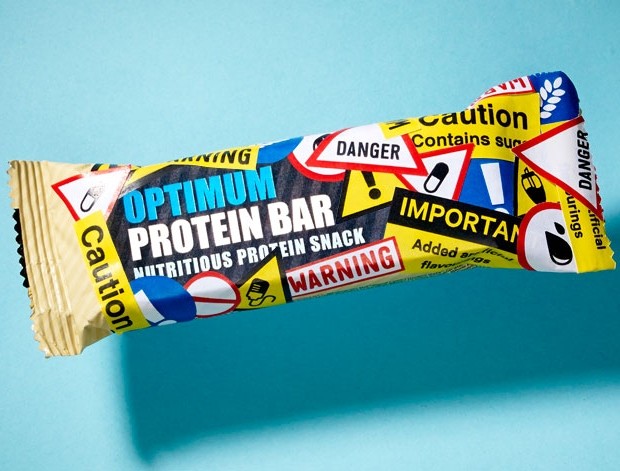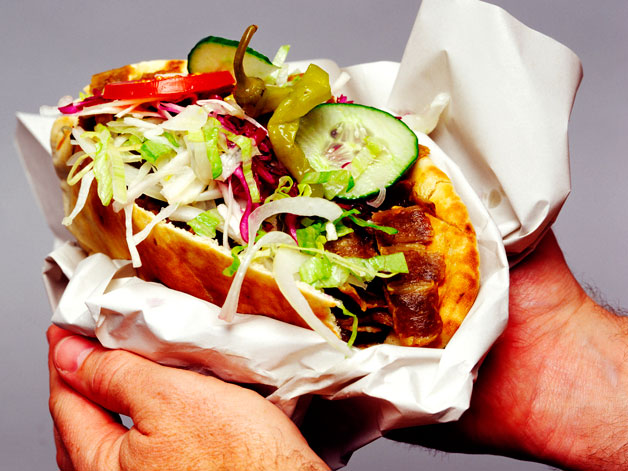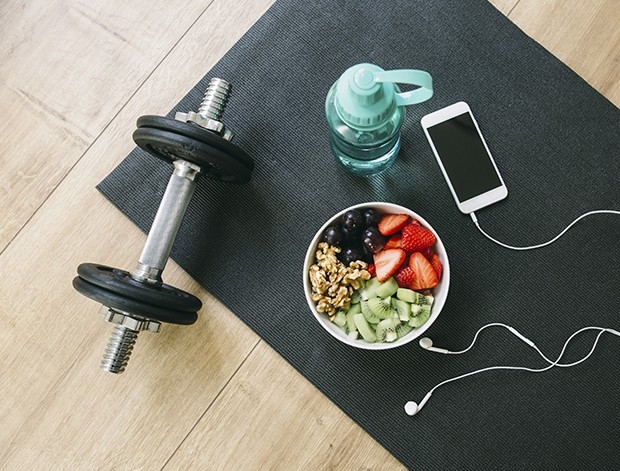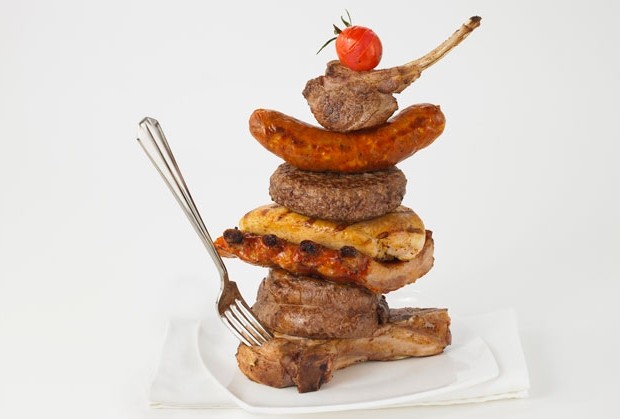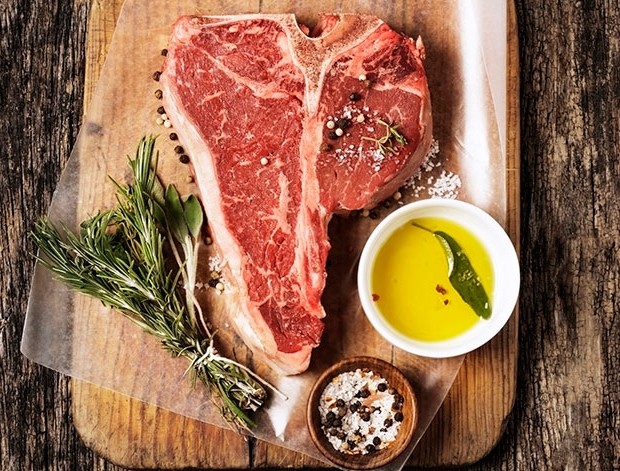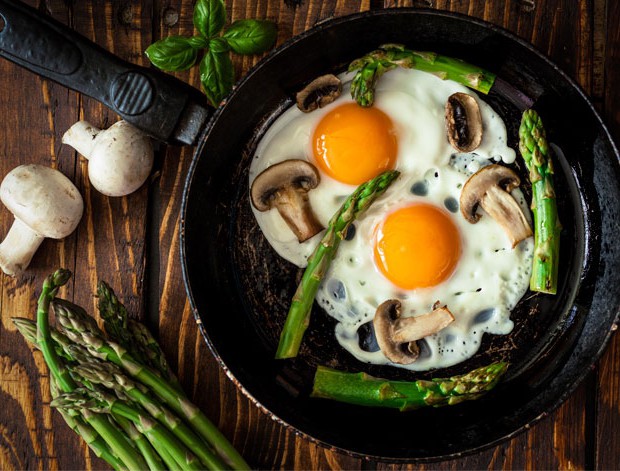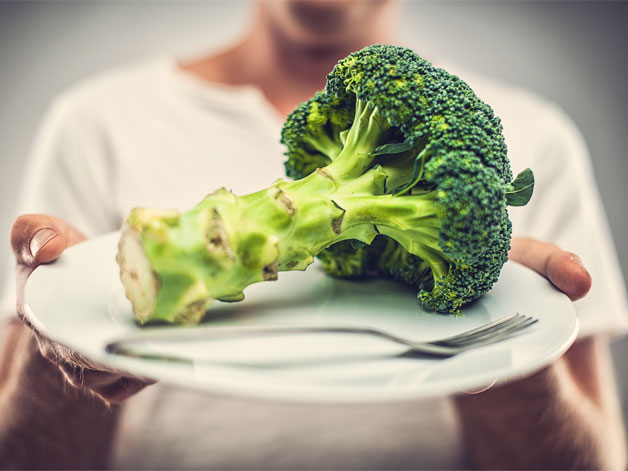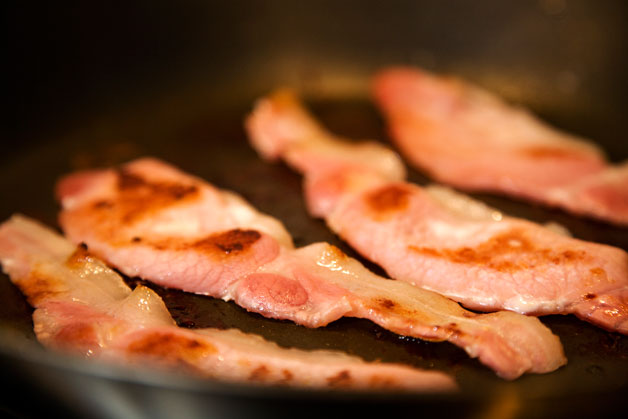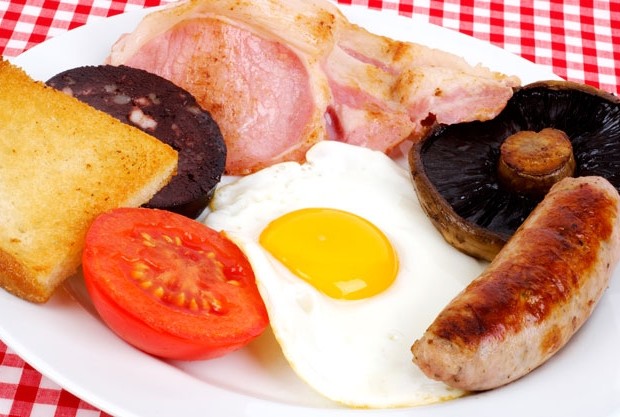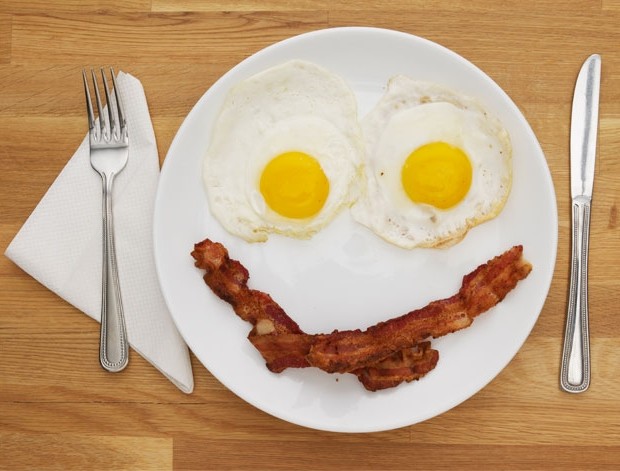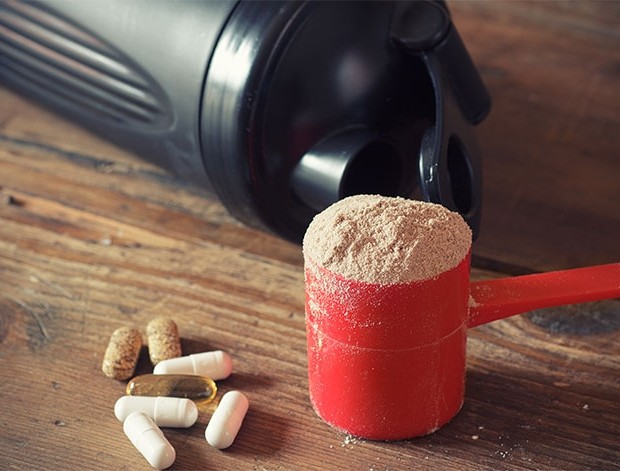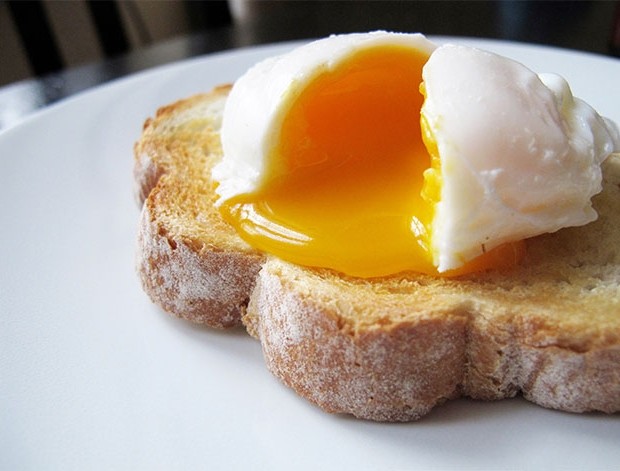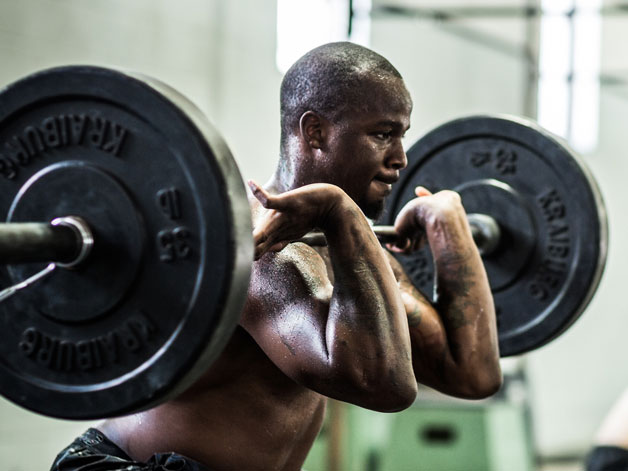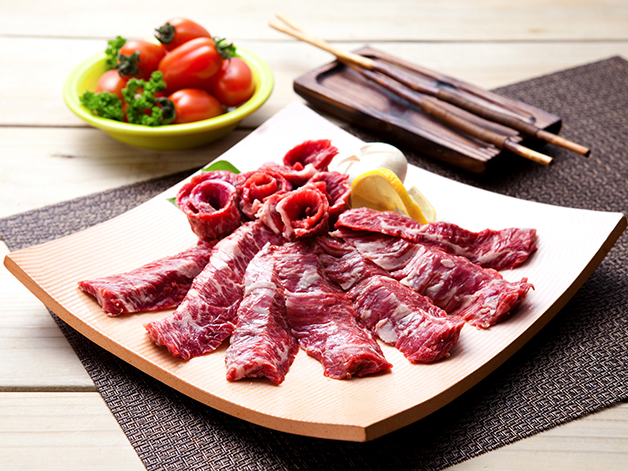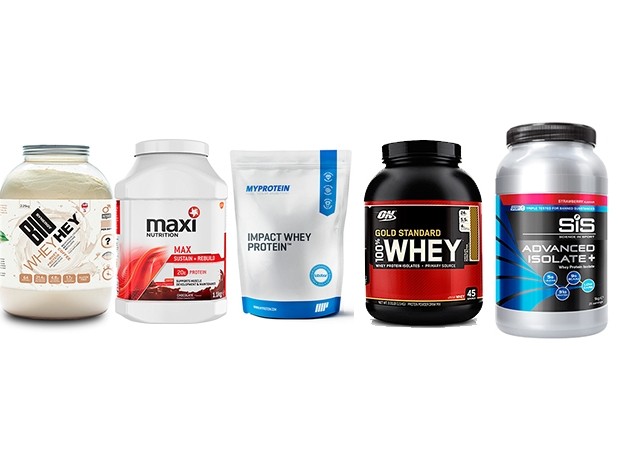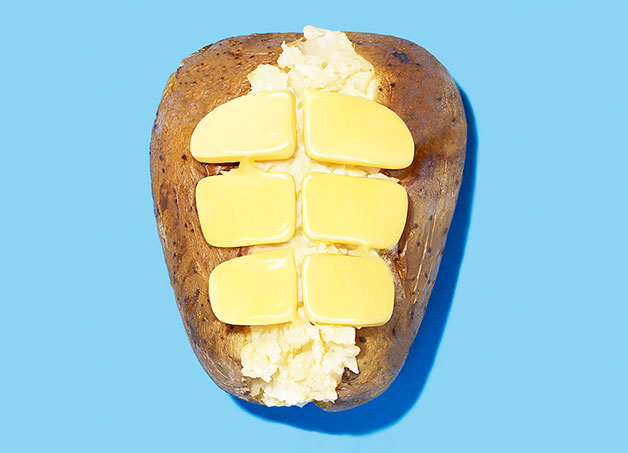Snort deridingly at the latest supermarket scandal and get your protein by the pig-load.

The list of UK food scandals has now grown one point longer, with the news that MRSA - a strain of antibiotic-resistant bacteria often deriving from meat - has been found in British pigs. Pork products from Sainsbury's and Asda were found to be contaminated with the superbug strain, which can cause serious health issues and is often resistant against even the strongest antibiotics.
So, what can you do to safeguard yourself against this rising trotter-terror? For one thing, you can go DIY on your muscle food and buy a whole pig, just like one MH writer.
I have a pig. He is dead. For reasons that will become clearer later, I call him Hansel. He has been chopped into a great many pieces of differing sizes, quite a lot of which I have already eaten. Those bits of my pig that I have not yet wolfed reside, for the time being, in my freezer. They will not be there for long. One by one they will all be whipped out, defrosted and turned into Michelin-inspired meals with impeccable nutritional credentials. Not long after that, I hope that they will beturned, by my body, into muscle.
I bought the pig six weeks ago. Since then, with the assistance of my wife, my daughter and a few lucky friends, I have been attempting to eat him all up. I’m about to tell you about it, but before we start I want to be clear: this is not a tale of greed. Instead, my pig is going to do me a number of important favours.
He is going to reduce my food bill. He is going to increase my range and inventiveness in the kitchen. He is going to assist with my New Year’s goal of becoming 5kg heavier while dropping 3% of my body fat. As I eat him, chop by chop and sausage by sausage, he is going to give me muscle-building protein and energy-boosting B-vitamins. He is going to be my personal trainer, nutritionist and financial manager, all at once. My pig may be dead, butchered and halfway digested. But I am certain of one thing: he has not given his life in vain.
Swine and dine
I eat a lot of meat. I’m not boasting; it is a metabolic necessity. I go to a dirty gym to lift heavy weights four times a week and I need the protein for muscular growth. Shakes help, but man can not live on synthesised goodness alone. Your body has been built to assimilate natural whole food and turn it into the energy it needs to repair itself. It’s a meat and potatoes theory that I’m happy to tuck into.
With this in mind, I eat animal protein at every meal. For breakfast: smoked salmon, pastrami or goat’s cheese. For lunch: tuna, scrambled eggs or cold cuts. For dinner: turkey breasts or rib-eye steaks. Between meals, I scarf handfuls of ham and rip thick strips off chicken carcasses. I dig on cocktail sausages and crab sticks. I do not waste my time with apples, crackers or crudités and, if I’m truthful, I don’t think much of people who do.
Which is all well and good. But the cost of meat is high and rising. My family’s weekly shopping bill hovers around £150, of which £50 is spent on animal flesh. And that’s just the supermarket. Add in the Friday-night takeaway (rogan josh), Sunday lunch in the pub (roast beef) and the odd, half-drunken aberration at the local Texas Fried Chicken (spicy wings), and my weekly outlay on meat is nearer £70.
That’s £3,640 a year. With food inflation at 6.4%, my meat bill alone could rise by £233 next year. I like meat. I savour meat. I need meat. But it’s becoming an expensive habit.
So I bought a pig. The whole thing cost me just £200. Or, since he weighed 60kg, he cost £3.33/kg – cheaper than almost anything in the supermarket meat-aisle.
And this is a good pig: a Gloucester Old Spot, raised on a British farm – not some limpid slob fattened up carelessly in a Hungarian factory. I bought him directly from Danny Lidgate, proprietor of Lidgate’s Butcher, one of the best in London. Like all good butchers, Danny will sell anyone a pig, and he’ll do the dirty work of jointing the meat for you, too. All you do is ring him and say, “I want a whole pig.”
You won’t be the only one, either. Buying a whole (or half) animal is increasingly popular, as people seek alternative ways to save money on quality meat.You know, ethics and all that. If you want to up your protein intake without sinking your wages into soulless suction-packed meatsicles, going all in is a very good bet.
I bought the pig to provide my family’s main source of protein for two months, reducing my meat bill and improving the quality of our food. If it works once, I hypothesised, then I could go a whole year on pig: 12 months, six swine, one happy family. Six pigs would mean £1,200 spent in a year rather than £3,873. On my nutritional balance sheet I would be massively in profit.
Why, then, do my friends think that I’m mad?

Impure thoughts
The pig, according to Levitical law, is impure.
God hates hogs.You will not tempt the obedient Jew or the God-fearing Muslim with a chipolata. Nor will you find a Rastafarian, an Ethiopian Orthodox Christian or a Seventh-day Adventist munching on a rack of baby-back ribs.
Well, to each their own. I have no wish to insult several of the world’s most ancient and solemn religions all at once, but you wonder if these cats know what they’re missing.
Nutritionally speaking, pork is one of the most useful meats, as I am informed by Dr Carrie Ruxton, dietitian and advisor to the Meat Advisory Panel. “Pork is high in protein, around 22g per 100g, and this is of a ‘high biological value’ which means that it supplies most of the essential amino acids we need,” she says.
“Pork is also rich in thiamine and niacin for energy delivery and digestive health, vitamin B12 to aid red blood cell formation, zinc for immune function and sperm quality, and potassium for blood pressure control.”
According to lovepork.co.uk, the fat content of the average lean piece of pork is around 4%, half of which is heart-friendly monounsaturated fat. Yes, it’s true that certain cuts contain a lot more than that. (A plump breakfast sausage might be up to 32% fat; you don’t even want to think about a streaky bacon sandwich with extra mayo.) But don’t get too hung up on that.
“Nutritionists are now concerned less about total fat and more about calories, saturated fat, salt and sugar,” says Ruxton. For me – an active thirtysomething – eating too much sat fat is far less of a dietary concern than eating too much sugar. In any case, pork is only as fatty as you wish it to be. Unlike beef, say, the fat and the lean protein in a pig are separated.
Whether you are eating a slice of rolled loin, a nice thick chop or a roasted shoulder, you can control the bulk of pork’s fat content by cutting off what you do not wish to eat. These, more or less, are the arguments I trot out whenever anyone asks me (as they frequently do) what the fuck I am doing, trying to eat a whole pig.
People tend to assume that this is some David Blaine-lite piece of gob gonzo: that I’m eating a pig to show off; that I see myself at best as some sort of slowcoach Kobayashi (Japan’s world record-holding hotdog eater), at worst a crass, yuppie version of Hugh Fearnley-Whittingstall.
It’s a fair cop. I admit: I am both obsessed by the nutritional potential of eating a pig, and slightly possessed by the bragging rights it will accrue. For if I eat a pig wholesale, I will be within my rights to go around talking it up: yeah, that’s right, I ate a 60kg animal. What of it? I went the whole hog.
Cut to the chase
Six weeks ago I sat in my kitchen, looking at the freezer. A van was on its way from the butcher, bringing my pig, dismembered and packed into four large boxes. My freezer, I realised, is not large. How the hell would it all fit? Slightly panicked, I threw everything that was already in the freezer into the bin. That meant sacrificing a box of Mini Milks, eight sardines, half a bag of peas, two pots of home-made chicken stock, and some white stuff that was either ice-cream or béchamel sauce.
Soon the van arrived. The driver asked if I was having a barbecue. I dissembled. I then spent an hour packing the pork into the freezer. Towards the end I had to jam some of it in with my foot. As I filled the freezer, I kept a ledger:
• Two legs, deboned and rolled. Each would comfortably feed 14 people
• A whole rolled loin as long as my leg,which I chopped into four pieces
• Eight pork chops
• Six steaks
• 12kg of sausages (Cumberland,cocktail sausages, chipolatas and Lidgate’s award-winning ‘Victoria & Alberts’)
• 2kg of smoked streaky bacon
• Three pieces of shoulder
• A slab of belly to roast
• Two knuckles
• A bag of trotters
• A bag of bones
• One rack of spare ribs; another of baby-back ribs
• Eight skewered kebabs
There was no head, thankfully, and I had declined Danny’s offer to put the heart and liver in the post. Still, it felt a bit odd. There is something psychosexually unsettling about the prospect of eating the entire body of another mammal. As I crammed the freezer, I thought about Armin Meiwes, the German man who was convicted in 2001 for killing a (willing) acquaintance and eating about 20kg of his body. “The flesh tastes like pork, a little bit more bitter, stronger,” Meiwes later confessed. “It tastes quite good.”
Meiwes was a very disturbed man. He was obsessed with the story of Hansel and Gretel, the Grimm tale in which a witch attempts to roast and eat a small boy. In acknowledgement of this, I decided to name my pig Hansel. But I drew the line at cooking my first meal the way Meiwes cooked his: a sautéed steak with salt, pepper, garlic and nutmeg, accompanied by Princess croquettes, Brussels sprouts and a pepper sauce. That would have been weird.
Instead, as I sat and thought the same hogwash that accompanies all acts of heroic transmammalian consumption, I cooked six of Danny Lidgate’s award-winning sausages very slowly on a griddle pan and ate them one by one, with a fork, dabbing each into a plateful of chilli-ketchup and swigging a cold beer. It was not Michelin cooking. But it was a start.

Making a meal of it
As I write this, I am running my tongue around my molars, prising out morsels of the leg of pork that was left over from Sunday’s roast. It has been in the fridge for a week, slowly diminishing.
This afternoon, I grazed on cold cuts. For dinner this evening I diced and stir-fried two large handfuls of the cooked meat, added chilli and garlic, spring onions, cashew nuts and sweet peppers, and finished it with nam pla, soy sauce and limejuice. I count this as my own invention (although I probably picked it up from Nigel Slater). But there’s been no shortage of other recipes to try. I have been conscious to cook meals that are low in refined carbs – primarily as a counterweight to all that saturated fat. It has helped keep my muscle gains steady, and my belly from going south. I haven’t put on even a snout of flab, despite treating myself to a bit too much crackling a bit too often.
The rustic French book Pork & Sons by Stéphane Reynaud (Phaidon Press) inspires other ways to eat Hansel. Spare Ribs with Barbecue Sauce takes about two days to cook and two minutes to eat, but justifies lighting the barbecue on a cold afternoon. Whatever the weather, my freezer is, at last, emptying. My daughter can have Mini Milks again.
But there is a problem to overcome when eating a whole pig: boredom. The smell of pork loin roasting in its crackling, with nothing but a brush of olive oil and a handful of Maldon salt, is delicious – the first time around. By the fourth loin, it begins to cloy. After 10 days of it my wife protests: she can eat no more pork. It takes me several hours to convince her to continue.
This, I suppose, is Hansel’s revenge.
For the sake of digestive variety, I venture east. Angela Malik’s Roast Pork with Fragrant Indian Pesto and Mint and Coriander Chutney (angelamalik.co.uk) reboots the Sunday lunch franchise. Her Goan Pork Vindaloo replaces our Friday-night takeaway.
As I advance through Hansel’s corpse, my iPad grows greasy. The Epicurious app (free) yields 1,490 recipes admitting to the keyword ‘pork’. The most satisfying is Cumin-Crusted Monster Pork Chop with Peach Chipotle Salsa, a recipe that paradoxically calls for kosher salt.
Of course, there are some errors. I had to throw a large sheet of Hansel’s burned skin into the dustbin after I lost my nerve trying to make pork scratchings to eat while watching the rugby. I had scored the fatty skin, salted and oiled it and thrown it into a 250˚C oven for a projected two hours. After 45 minutes the oven was billowing smoke and I worried a neighbour would call the fire brigade. In a terror, I threw the whole lot into the back garden, and fried some more sausages to calm myself down.
Chewing the fat
In the six weeks since I have had Hansel, I’ve eaten around 65%of him. There’s a shoulder, a large leg, a few chops, the bag of chipolatas,a bellys lab, three steaks and two knuckles still to go. The trotters are hidden at the back of the freezer. I’ll eat them when I get desperate.
Despite the consumption of a titanic amount of pig,my own body fat hasnot increased. With meat at the core of my diet I have been burning protein for fuel, rather than taking onthe carbs that tends to cause male-pattern fatness. I’ve saved around £200 on my shopping bill.
Meanwhile, I have slowly been assimilating Hansel into my own frame. A strength-training regime combined with a diet that includes at least 250g of pig flesh every day has allowed me to gain nearly 2kg of lean body mass.
And this, in the end, was the aim. The pig works. When I have finished with Hansel, I will happily return to Danny Lidgate with another £200 and buy Gretel. Alas, I fear that my wife, her nostrils mortally offended by a third month’s stench of roasting fleisch, might petition for divorce. It is probably not a price worth paying.
But the pork life is most certainly worth living, if only once, and if only to say that you, too, know what it means to literally pig out.


